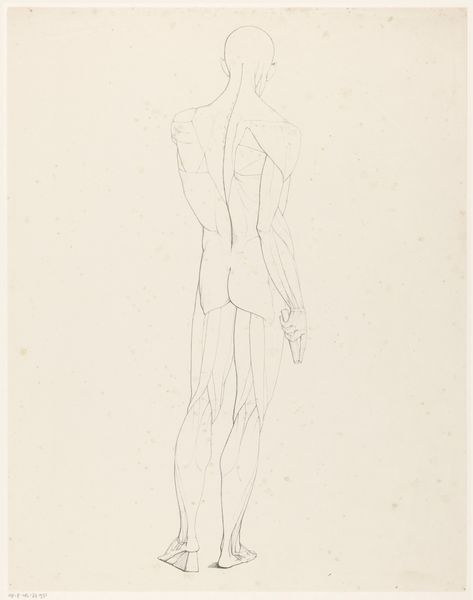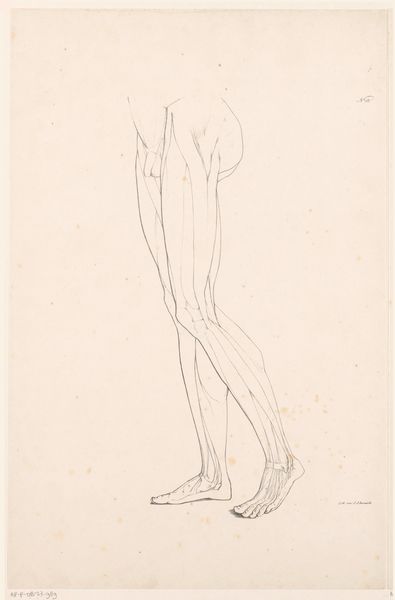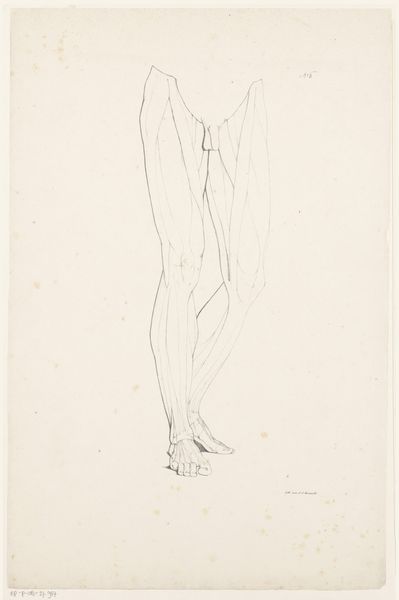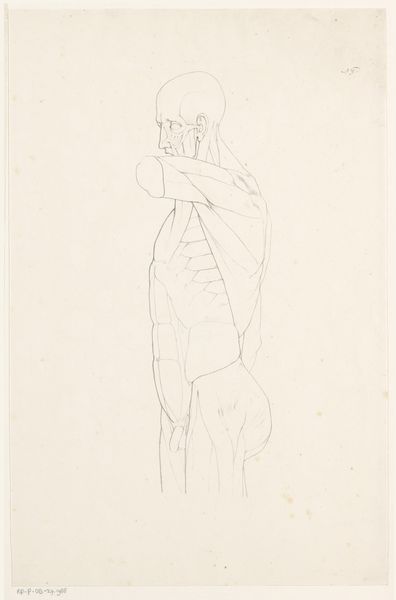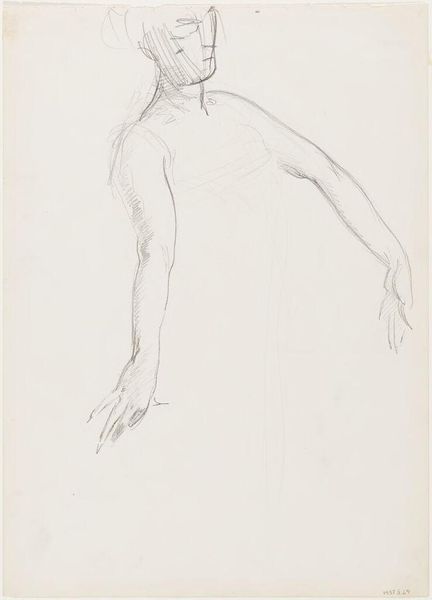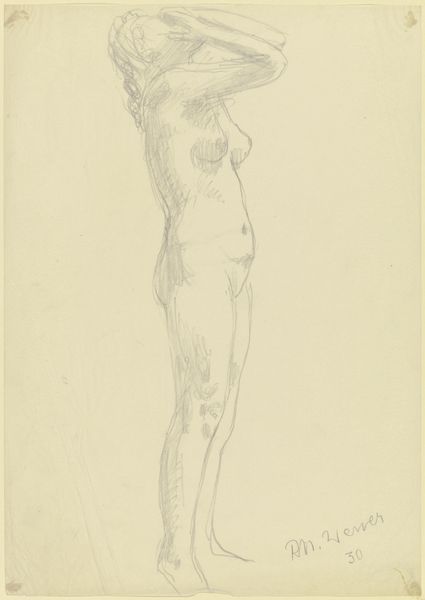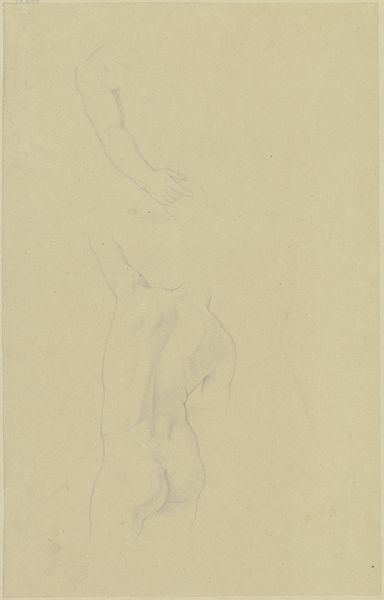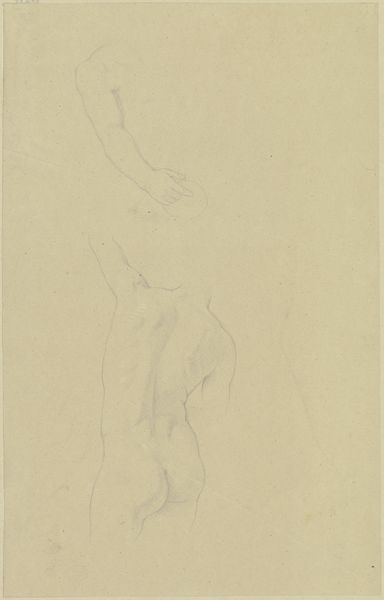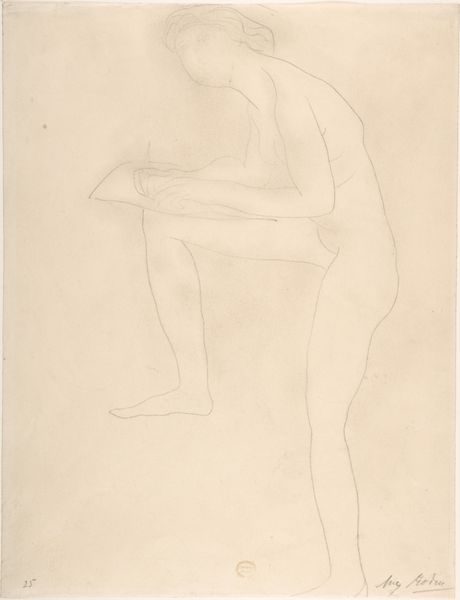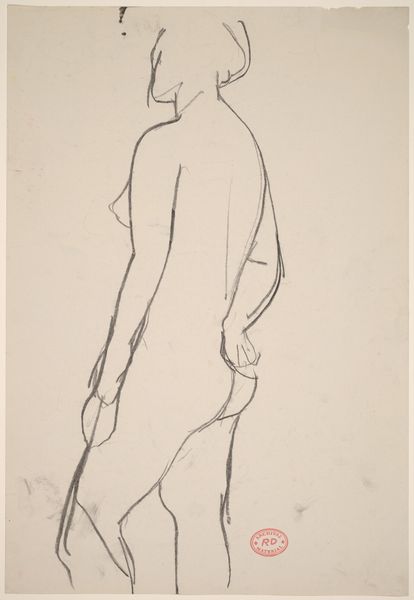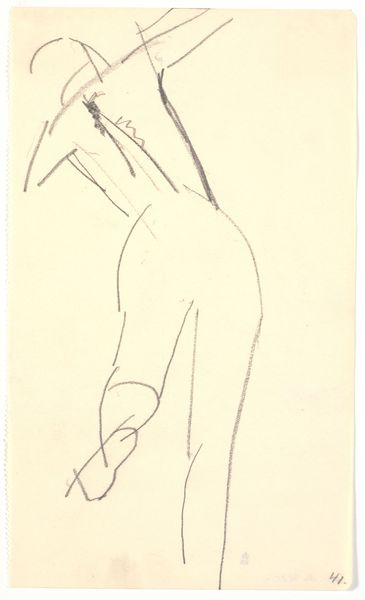
drawing, pencil
#
portrait
#
drawing
#
pencil sketch
#
classical-realism
#
form
#
pencil
#
line
#
academic-art
#
realism
Dimensions: height 545 mm, width 425 mm
Copyright: Rijks Museum: Open Domain
Editor: This drawing, “Tekenvoorbeeld van een écorché van opzij gezien” by Jean Augustin Daiwaille, made between 1820 and 1833, presents an anatomical study in pencil. The starkness of the flayed figure against the paper makes me think of medical textbooks, yet the classical pose also evokes a sense of idealized form. What do you see in this piece? Curator: The écorché, the flayed figure, it's a potent symbol. Stripped bare, it reveals not just anatomical accuracy but also a kind of raw truth. In the 19th century, this became part of a broader cultural movement examining the role of rationality in understanding the world. Editor: So, more than just scientific curiosity, it taps into broader cultural anxieties? Curator: Precisely! Think about the context: The Enlightenment had championed reason, yet societal ills persisted. The écorché embodies that tension – the desire to dissect and understand versus the discomfort of what's revealed. Notice, how the pose echoes classical sculpture? It elevates scientific study, lending it a kind of timeless significance, a yearning for deeper knowledge embedded within the collective human psyche. How does it makes you feel when looking at this study? Editor: It’s strange – both clinical and monumental. There's something very vulnerable about exposing the body in this way. But framing it in this classic pose somehow restores the person's dignity? Curator: Indeed. Daiwaille's drawing speaks to the dual nature of human existence, where beauty and fragility coexist. The drawing becomes an introspective investigation of our humanity and mortality, connecting scientific exploration to something much deeper. It is like the symbolism and tradition of mortality symbols found within earlier vanitas paintings, which served as reminders that earthly beauty and knowledge would inevitably fade, contrasting human perception against the passage of time and mortality. Editor: That's fascinating, it highlights the cultural significance layered into what at first seems like a purely scientific image. I learned that beneath surface representation lies rich cultural heritage, philosophical questions, and the intricate play of cultural memory! Curator: I, too, leave enlightened by your observation that the classical artistic canon adds dignity to medical diagrams! Thank you for expanding the artwork’s depth through the use of insightful perception!
Comments
No comments
Be the first to comment and join the conversation on the ultimate creative platform.
